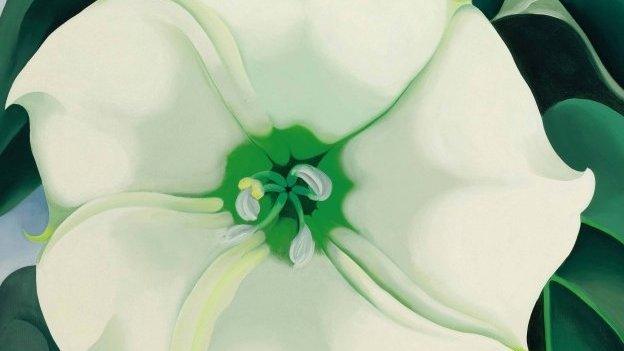Figures reveal art auction gender imbalance
- Published
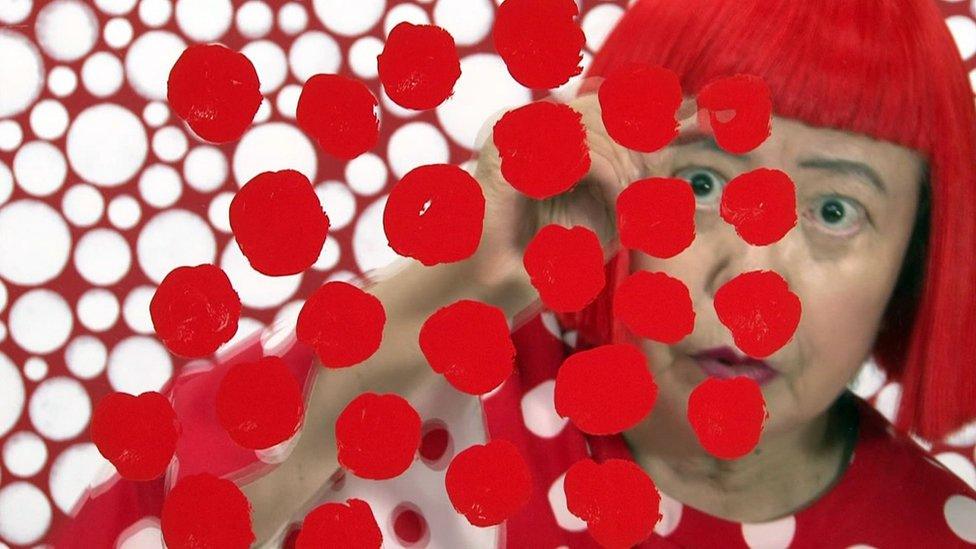
Yayoi Kusama, who is known for her polka dots, is the world's best-selling female artist
Of the top 100 artists whose works fetched the highest amounts at auction in 2017, just 13 were women, an analysis of sales data shows.
The top female artist was Japan's Yayoi Kusama, whose works sold for $65.6m (£48.9m) - putting her 13th overall, according to figures from MutualArt.
The 13 women in the top 100 accounted for sales of $263m (£175m) - 7.4% of the overall total of $3.5bn (£2.6bn).
The Art Newspaper's Anna Brady said she was "depressingly unsurprised".
Leonardo da Vinci was top of the 2017 auction rankings, thanks to the $450m (£337m) sale of the Salvator Mundi painting last November.
He was followed by Jean Michel Basquiat - whose works fetched $338m (£253m) in 2017 - then Andy Warhol, Cy Twombly and Roy Lichtenstein.
At the age of 89, Kusama is the only living woman in the top 50.
After her, the top-selling women were Louise Bourgeois, Joan Mitchell and Agnes Martin - who, like Kusama, made their names in 1950s New York.
The top-selling female artists:
1. Yayoi Kusama
Yayoi Kusama: Visions of polka dot infinity
2017 total auction sales = $65.6m (£49.2m)
The colourful Kusama (born 1929) is famed for paintings and sculptural installations that build seemingly endless patterns of polka dots. The Japanese artist was an influence on Pop Art in the 1950s and 60s and, in monetary terms, is far ahead of any other female artist.
2. Louise Bourgeois
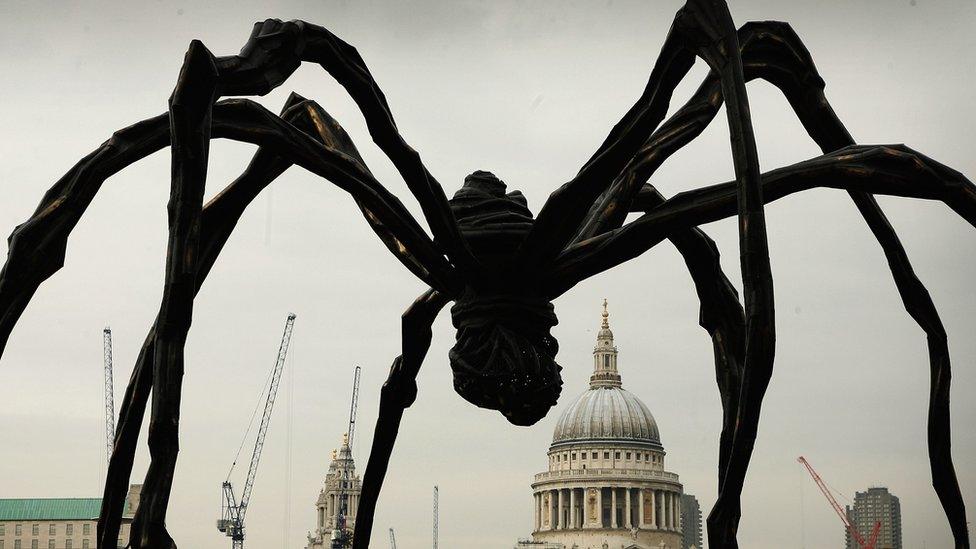
2017 auction sales = $36.8m (£27.6m)
The French-American artist (1911-2010) created suggestive sculptures that reimagined the human figure, body parts and organs. She's also known for her huge spiders, which have appeared around the world and are her biggest-selling works.
3. Joan Mitchell
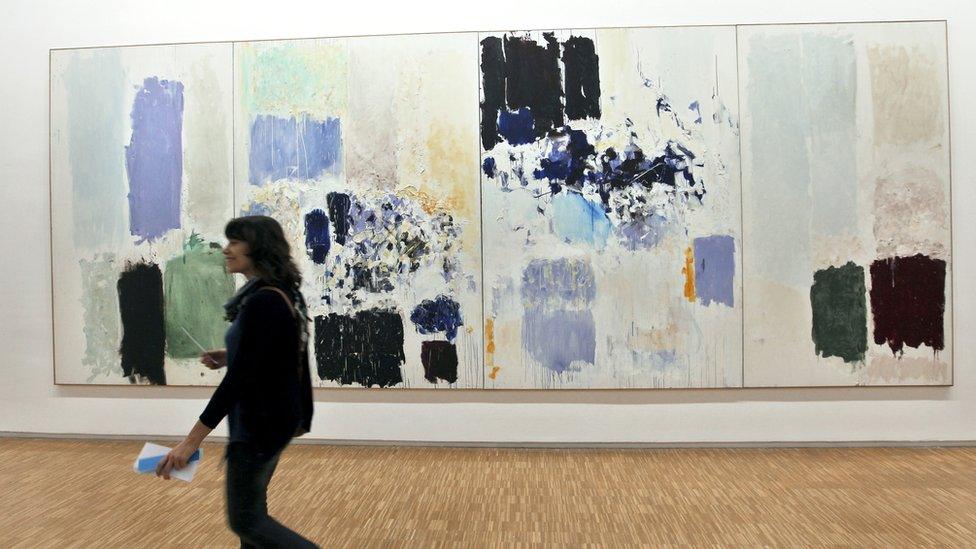
2017 auction sales = $30.5m (£22.9m)
From the abstract expressionism scene, Mitchell (1925-92) spun webs of bold brushstrokes on pale backgrounds, often inspired by nature. One of her paintings sold for $16.6m (£12.4m) earlier this month, smashing her auction record.
4. Agnes Martin

2017 auction sales = $26.3m (£19.7m)
Martin (1912-2004) was another of the key female abstract artists in New York in the 1950s, but her canvases - always square - were more minimalist and usually featured subtle pencil lines and blocks of pale colours.
5. Dame Barbara Hepworth
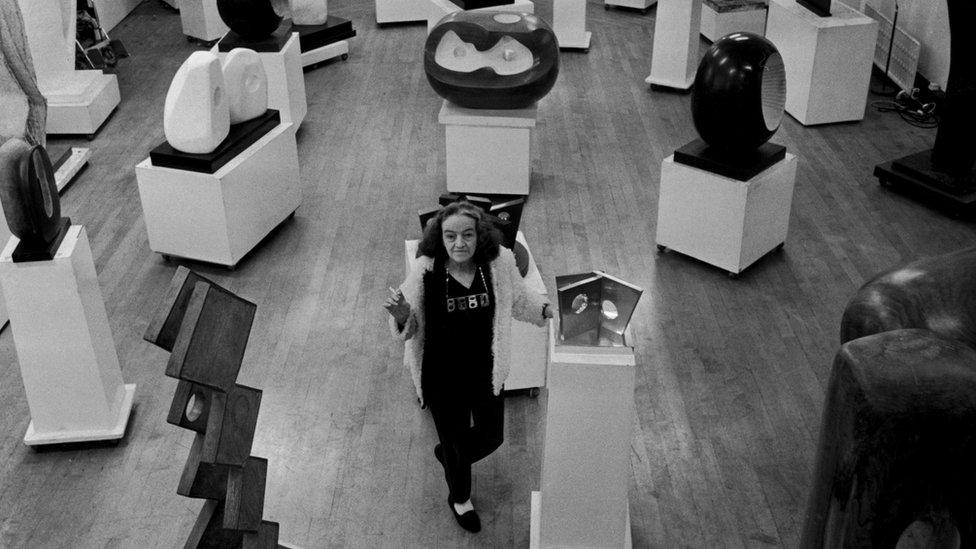
2017 auction sales = $15.9m (£11.9m)
Dame Barbara (1903-75) was a British sculptor whose signature works were large, rounded blocks that evoke the shapes of nature and the human form - with holes in the middle.
The other British women in the overall top 100 were Bridget Riley and Cecily Brown.

The imbalance between men and women stems from a "systemic gender bias" in the factors that go into deciding an artist's value - which has existed for many years - according to Kate Todd, data analyst at MutualArt, an online art information service.
For decades, key museums and galleries have focused on exhibiting and collecting work by male artists, and have normally been run by men. Dealers and private collectors have also been predominantly male.
Anna Brady, who is The Art Newspaper's deputy art market editor, says: "You've had centuries of male collectors, male art historians and male critics, generally.
"I'm not saying they're incapable of appreciating female artists, but I think it brings with it a certain bias. Female artists have often gone under the radar.
"Things like having children has affected female artists over the years - and they just haven't been appreciated or have been taken less seriously over the centuries and the decades of the 20th Century."

In December, a study suggested, external that people do not rate a work of art as highly if they believe it is by a woman. That shows "a general bias", Brady says.
Oliver Barker, senior international specialist of contemporary art at Sotheby's, says there has been "institutional oversight" in the art world in the past, but that a "revolutionary change" is under way.
In the UK, the directors of Tate, the Serpentine and the Whitechapel galleries are all women, four of the last six Turner Prize winners have been women, and Barker says there are now more female art collectors and patrons.
"Historically the art world probably has been guilty of oversight," Barker says. "I think it's fair to say that in the '50s or the '60s, it was just harder for female artists to break through in a male dominated market.
'Got to be realistic'
"If you look at museum collections, the history of post-war collecting at the Tate of the Metropolitan or the Pompidou is probably largely male. Whether it's institutions or art schools or auction houses, we're trying to redress that balance."
But while he stresses that gender isn't considered when an auction house puts a price on an artwork, there are complex factors at play when deciding on something's value, and prices have "got to be based on reality".
"We can only reflect the market for a particular artist," he says. "[The price] has got to be based on what is the precedent for that particular art, what is the breakout appeal or opportunity that's here?
"We're in the business of also satisfying our vendors and purchasers so it's not just a question of trying to redress any balance of prejudice that historically has been institutionalised."
Gender inequality clearly isn't just a problem in auction houses - just 11% of the highest-grossing movies in the US last year were directed by women, while women make up just 15% of corporate boards around the globe.
'Signs of change'
In the art world, Anna Brady believes the gender balance is better in the primary market - the commercial galleries where art is initially sold - but that the pace of change of waiting for that to filter through to auctions is going to be "painfully slow".
Galleries and dealers are making an effort to push artists who were overlooked in the past and those who are now emerging, according to Kate Todd.
"There's some really great momentum behind contemporary female artists at the moment," she says. "I think it's going to take some time for them to reach their upper level - to break into that core group of consistently top achieving artists, simply because the volume of work isn't there yet.
"But there are some really exciting signs of female artists who are changing the landscape and who give some hope that there's going to be some disruption in that top group sooner rather than later."

Five artists under 50 who are rising up the auction rankings:

The Sick Leaves by Cecily Brown
Cecily Brown - a London-born artist whose works fetched $14.8m last year - up from $613,000 in 2016.
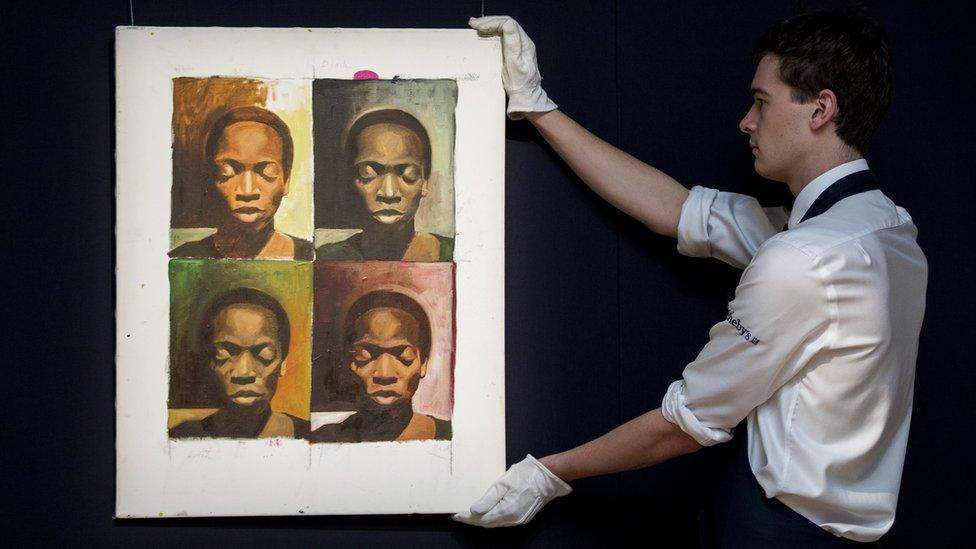
A la Warhol by Njideka Akunyili Crosby
Njideka Akunyili Crosby - the record price for a work by this Nigerian-born, Los Angeles-based artist, who is in her 30s, reached $3.4m this month.
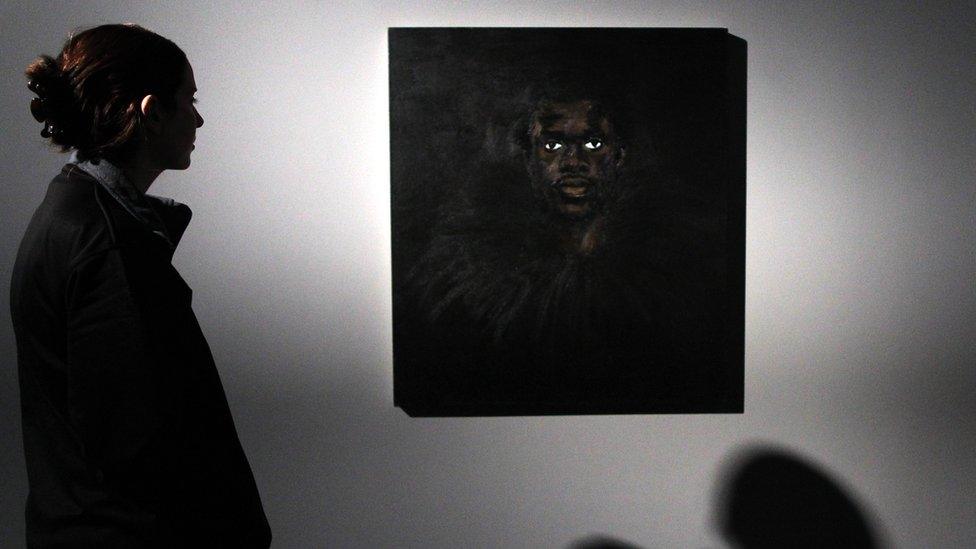
Lynette Yiadom-Boakye was nominated for the 2013 Turner Prize
Lynette Yiadom-Boakye - a British artist whose portraits of black figures sold for a total of $2.5m last year.
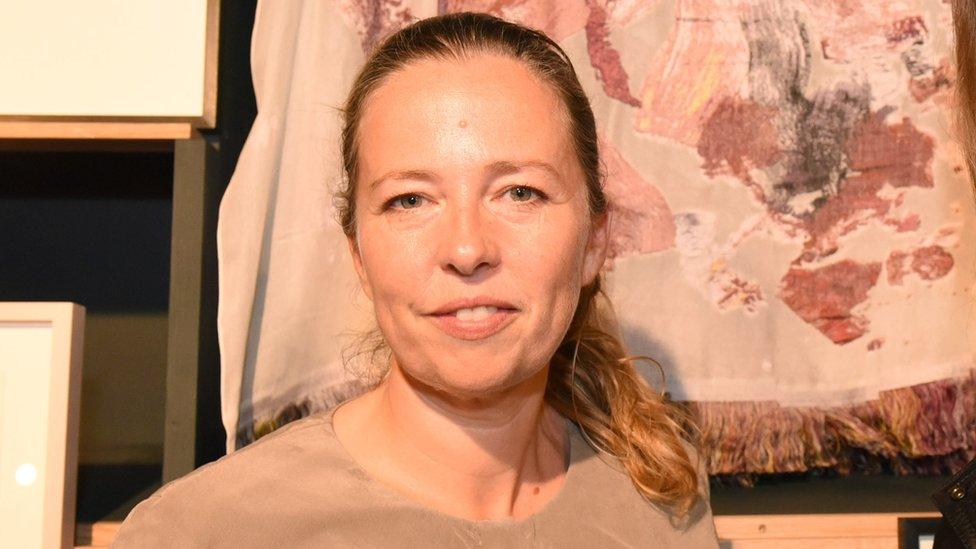
Jenny Saville - another Brit, she saw her unflinching portraits fetch $11.8m in 2016 and '17.
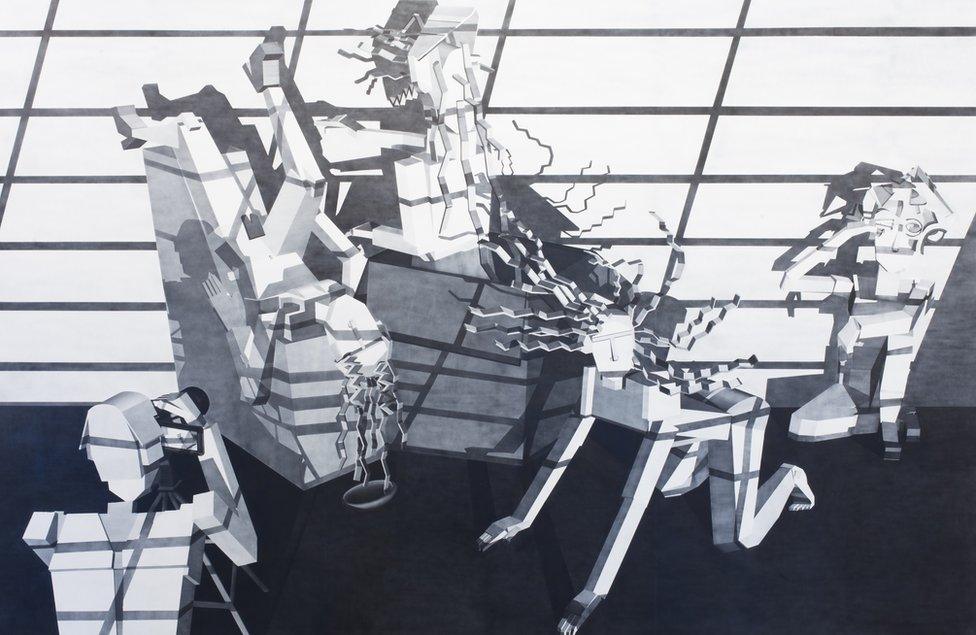
Avery Singer - Fellow Travelers, Flaming Creatures, 2013
Avery Singer - aged 30, she made the art world take notice when a 2013 work, one of just a handful of her pieces to have come up for auction so far, smashed expectations to sell for $735,000 this month - six times higher than its upper estimate.

Follow us on Facebook, external, on Twitter @BBCNewsEnts, external, or on Instagram at bbcnewsents, external. If you have a story suggestion email entertainment.news@bbc.co.uk.
- Published4 March 2018
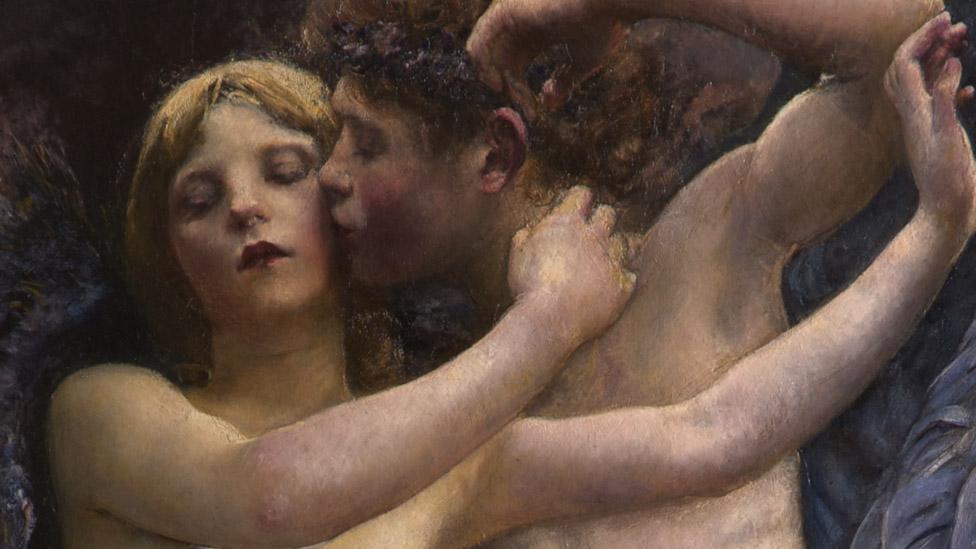
- Published21 September 2016
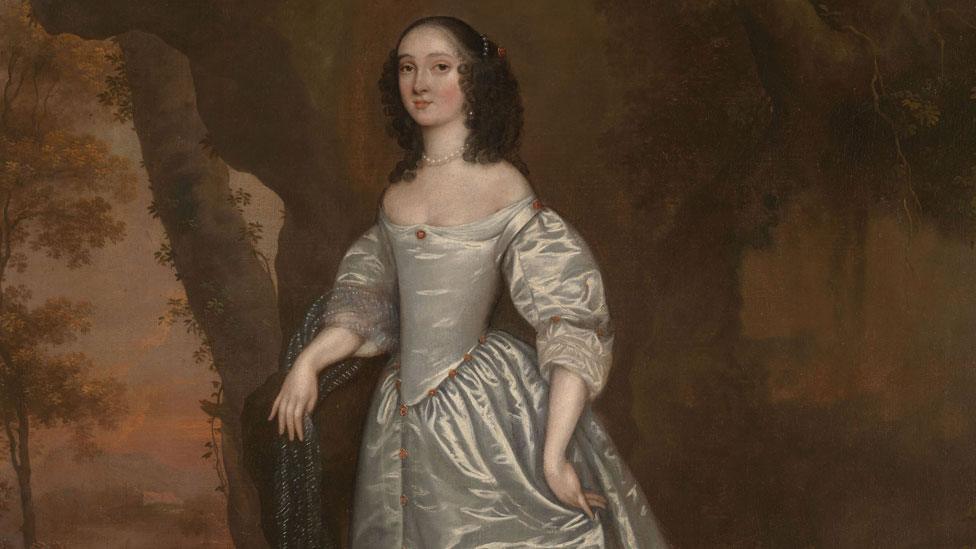
- Published21 November 2014
